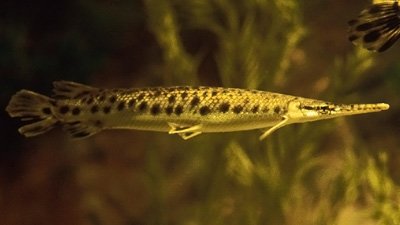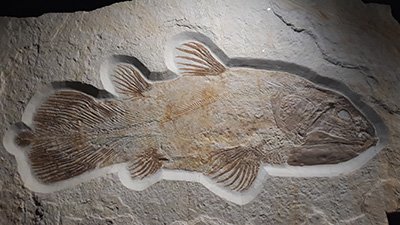
World's Oldest Flying Insect Fossil Found In Massachusetts
The world’s oldest (allegedly) fossilized impression of a flying insect wasn’t found in a rock quarry in an exotic setting; it was found behind a strip mall in suburban Massachusetts.
News Source
Paleontology lecturer Jake Benner and geology student Richard Knecht from Tufts University learned of a fossil location in Massachusetts from a master’s thesis authored in 1929. Now located in a wooded field behind a strip mall, the site yielded an interesting treasure: the fossilized impression of a flying insect they believe is the oldest ever found.
The scientists have concluded the insect may be related to the mayfly.
While the news release calls the flying insect “primitive,” fossil impressions are merely rough indications of the creatures that made them—not the remains of the creatures themselves. Thus, we can imagine an evolutionary interpretation helping the scientists “flesh out” the fossil impression and giving them the idea that it was primitive. With the help of University of Kansas entomologist Michael Engel, the scientists have concluded the insect may be related to the mayfly.
The impression, which is about three inches long, has been labeled 300 million years old. (See a LiveScience photograph of Knecht with the impression.) This is apparently based on dating of the layer, as the impression was found in rock associated with the Carboniferous Period. Benner and Knecht also found the tracks of amphibians and other creatures at the site.
According to Benner, the fossil impression “captures a moment in time over 300 million years ago when a flying insect just happened to land on a damp, muddy surface leaving almost a perfect impression of its body behind.” The press release also points out that bodies of “primitive flying insects” are rarely preserved.
Of course, as most readers are probably aware, ordinary conditions do not result in muddy surfaces turning into rock—or tracks and other impressions becoming fossilized. The rare impression was likely made just before or during catastrophic processes that transformed the sediment into a layer of what is now rock. Add in the old-age interpretation of that layer’s age, along with the evolutionary corollary of how “primitive” the find must be, and—voilà!—we’ve got news.
Further Reading
- >How Fast?
- Unlocking the Geologic Record
- Rare Fossil Insect Discovery by Creationist Confirms “No Change”
For More Information: Get Answers
Remember, if you see a news story that might merit some attention, let us know about it! (Note: if the story originates from the Associated Press, FOX News, MSNBC, the New York Times, or another major national media outlet, we will most likely have already heard about it.) And thanks to all of our readers who have submitted great news tips to us. If you didn’t catch all the latest News to Know, why not take a look to see what you’ve missed?
(Please note that links will take you directly to the source. Answers in Genesis is not responsible for content on the websites to which we refer. For more information, please see our Privacy Policy.)
Recommended Resources

Answers in Genesis is an apologetics ministry, dedicated to helping Christians defend their faith and proclaim the good news of Jesus Christ.
- Customer Service 800.778.3390
- Available Monday–Friday | 9 AM–5 PM ET
- © 2025 Answers in Genesis





